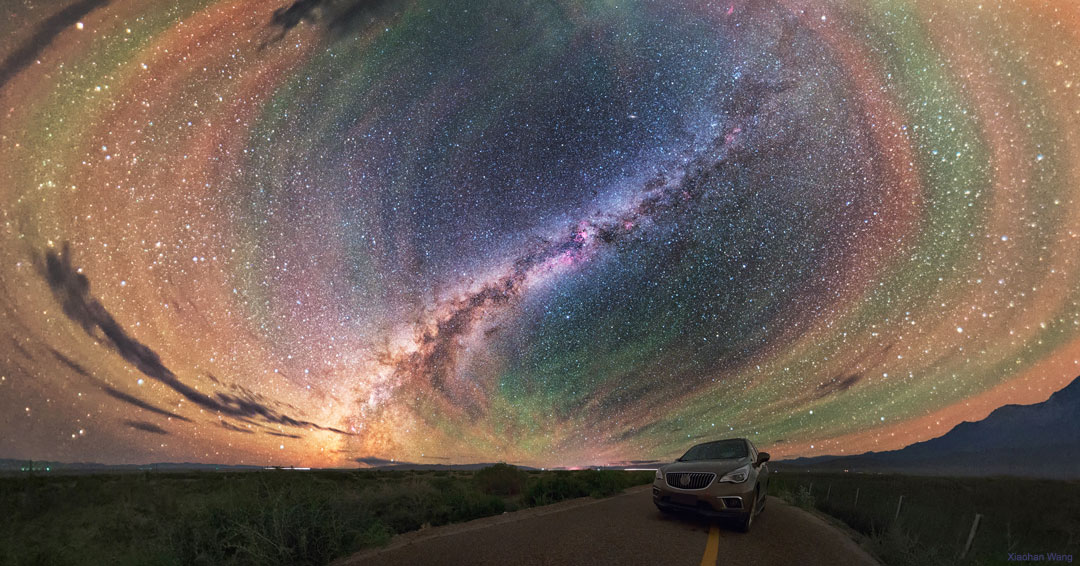Abraham John Bond Jr., known as Son Bonds (March 16, 1909 – August 31, 1947), was an American country blues guitarist, singer and songwriter. He was a working associate of Sleepy John Estes and Hammie Nixon. He was similar to Estes in his guitar-playing style. According to the music journalist Jim O’Neal, “the music to one of Bonds’s songs, ‘Back and Side Blues’ (1934), became a standard blues melody when Sonny Boy Williamson I, from nearby Jackson, Tennessee, used it in his classic “Good Morning, School Girl“. The best-known of Bonds’s other works are “A Hard Pill to Swallow” and “Come Back Home.”
Bonds was born in Brownsville, Tennessee. He was also billed on records as “Brownsville” Son Bonds and Brother Son Bonds.
Sleepy John Estes, in his earlier recordings, was backed by Yank Rachell (mandolin) or Hammie Nixon (harmonica), but by the late 1930s he was accompanied in the recording studio by either Bonds or Charlie Pickett (guitar). Bonds also backed Estes on a couple of recording sessions in 1941. In return, either Estes or Nixon played on every one of Bonds’s own recordings. In the latter part of his career, Bonds played the kazoo as well as the guitar on several tracks.
According to Nixon’s later accounts of the event, Bonds suffered an accidental death in August 1947. While sitting on his front porch late one evening in Dyersburg, Tennessee, Bonds was shot to death by his nearsighted neighbor, who mistook him for another man, with whom the neighbor was having a protracted disagreement.
see full post...STOP THE WAR IN UKRAINE
see full post...This finely detailed image shows the heart of NGC 1097, a barred spiral galaxy that lies about 48 million light-years from Earth in the constellation Fornax. This picture reveals the intricacy of the web of stars and dust at NGC 1097’s centre, with the long tendrils of dust picked out in a dark red hue. The extent to which the galaxy’s structure is revealed is thanks to two instruments on the NASA/ESA Hubble Space Telescope: the Wide Field Camera 3 (WFC3) and the Advanced Camera for Surveys (ACS). The idea that a single image can be taken using two different cameras is not very intuitive. However, it makes far more sense after delving into how beautiful astronomical images like this one are composed. A helpful starting point is to consider what colour is, exactly. Our eyes can detect light waves at optical wavelengths between roughly 380 and 750 nanometres, using three types of receptors, each of which is sensitive to just a slice of that range. Our brain interprets these specific wavelengths as colours. By contrast, a telescope camera like the WFC3 or ACS is sensitive to a single, broad range of wavelengths to maximise the amount of light collected. Raw images from telescopes are always in greyscale, only showing the amount of the light captured across all those wavelengths. Colour images from telescopes are indirectly possible, however, with the help of filters. By sliding a filter over the aperture of an instrument like the WFC3 or ACS, only light from a very specific wavelength range is let through — one such filter used in this image is for green light around 555 nanometres. This yields a greyscale image showing only the amount of light with that wavelength. This multicolour image of NGC 1097 is composed of images using seven different filters in total.

Ryland Peter “Ry” Cooder (born March 15, 1947) is an American musician, songwriter, film score composer, record producer, and writer. He is a multi-instrumentalist but is best known for his slide guitar work, his interest in traditional music, and his collaborations with traditional musicians from many countries.
Cooder’s solo work draws upon many genres. He has played with John Lee Hooker, Captain Beefheart, Gordon Lightfoot, Ali Farka Touré, Eric Clapton, The Rolling Stones, Van Morrison, Neil Young, Randy Newman, Linda Ronstadt, Vishwa Mohan Bhatt, David Lindley, The Chieftains, The Doobie Brothers, and Carla Olson and The Textones (on record and film). He formed the band Little Village, and produced the album Buena Vista Social Club (1997), which became a worldwide hit; Wim Wenders directed the documentary film of the same name (1999), which was nominated for an Academy Award in 2000.
Cooder was ranked at No. 8 on Rolling Stone magazine’s 2003 list of “The 100 Greatest Guitarists of All Time”, while a 2010 list by Gibson Guitar Corporation placed him at No. 32. In 2011, he published a collection of short stories called Los Angeles Stories.
Ryland Peter Cooder was born in Los Angeles on March 15, 1947, the son of Emma Casaroli and Bill Cooder. His mother was of Italian descent. He grew up in Santa Monica, California, and graduated from Santa Monica High School in 1964. During the 1960s, he briefly attended Reed College in Portland, Oregon. He began playing the guitar when he was three years old. At the age of four, he accidentally stuck a knife in his left eye and has sported a glass eye ever since.
see full post...Charles Lloyd (born March 15, 1938) is an American jazz musician. Though he primarily plays tenor saxophone and flute, he has occasionally recorded on other reed instruments, including alto saxophone and the Hungarian tárogató. Lloyd’s primary band since 2007 has been a quartet including pianist Jason Moran, acoustic bassist Reuben Rogers, and drummer Eric Harland.
Charles Lloyd was born and grew up in Memphis, Tennessee, United States, and was exposed to blues, gospel and jazz. He is of African, Cherokee, Mongolian, and Irish ancestry. He was given his first saxophone at the age of nine and was riveted by 1940s radio broadcasts by Charlie Parker, Coleman Hawkins, Lester Young, Billie Holiday and Duke Ellington. His early teachers included pianist Phineas Newborn, Jr. and saxophonist Irvin Reason. His closest childhood friend was trumpeter Booker Little. As a teenager Lloyd played jazz with saxophonist George Coleman, Harold Mabern, and Frank Strozier, and was a sideman for blues artists Bobby “Blue” Bland, Howlin’ Wolf and B.B. King, and R & B singer Johnny Ace.
In 1956, Lloyd left Memphis for Los Angeles to earn a degree in music at the University of Southern California, where he studied with Bartókspecialist Halsey Stevens. At night, he played in jazz clubs with Ornette Coleman, Billy Higgins, Scott LaFaro, Don Cherry, Charlie Haden, Eric Dolphy, Bobby Hutcherson and other leading west coast jazz artists. He also was a member of Gerald Wilson‘s big band.
see full post...Samuel John “Lightnin’” Hopkins (March 15, 1912 – January 30, 1982) was an American country blues singer, songwriter, guitarist and occasional pianist from Centerville, Texas. In 2010 Rolling Stone magazine ranked him No. 71 on its list of the 100 greatest guitarists of all time.
The musicologist Robert “Mack” McCormick opined that Hopkins is “the embodiment of the jazz-and-poetry spirit, representing its ancient form in the single creator whose words and music are one act”.
Hopkins was born in Centerville, Texas. As a child, he was immersed in the sounds of the blues. He developed a deep appreciation for the music at the age of 8, when he met Blind Lemon Jefferson at a church picnic in Buffalo, Texas. He went on to learn from his distant older cousin, the country blues singer Alger “Texas” Alexander; Hopkins had another cousin, the Texas electric blues guitarist Frankie Lee Sims, with whom he later recorded. Hopkins began accompanying Jefferson on guitar at informal church gatherings. Jefferson reputedly never let anyone play with him except Hopkins, and Hopkins learned much from Jefferson at these gatherings.
https://www.youtube.com/watch?v=7MoBN70EWwE
see full post...
FREE UKRAINE
see full post...This image features the spectacular galaxy NGC 4254, also known as Messier 99. It’s an example of a grand design spiral galaxy, featuring strong, prominent, well-defined arms that wrap clearly around the galaxy’s centre. Messier 99 is located 49 million light-years from Earth in the constellation of Coma Berenices. Here it was imaged in exquisite detail by the Multi-Unit Spectroscopic Explorer (MUSE) on ESO’s Very Large Telescope (VLT). It is a combination of observations conducted in different colours, or wavelengths, of light, showing clouds of gas ionised by newly born stars. Hydrogen, oxygen and sulphur gas are shown in red, blue and orange respectively. The image was taken as part of the Physics at High Angular resolution in Nearby GalaxieS (PHANGS) project, which is making high-resolution observations of nearby galaxies across all wavelengths of the electromagnetic spectrum to understand the life-cycle of star formation in galaxies.

Robert Pete Williams (March 14, 1914 – December 31, 1980) was an American Louisiana blues musician. His music characteristically employed unconventional structures and guitar tunings, and his songs are often about the time he served in prison. His song “I’ve Grown So Ugly” has been covered by Captain Beefheart, on his album Safe as Milk (1967), and by The Black Keys, on Rubber Factory (2004).
Williams was born in Zachary, Louisiana, to a family of sharecroppers. He had no formal schooling, and spent his childhood picking cotton and cutting sugar cane. In 1928, he moved to Baton Rouge, Louisiana and worked in a lumberyard. At the age of 20, Williams fashioned a crude guitar by attaching five copper strings to a cigar box, and soon after bought a cheap, mass-produced one. Williams was taught by Frank and Robert Metty, and was at first chiefly influenced by Peetie Wheatstraw and Blind Lemon Jefferson. He began to play for small events such as Church gatherings, fish fries, suppers, and dances. From the 1930s to the 1950s, Williams played music and continued to work in the lumberyards of Baton Rouge.
see full post...Shirley Scott (March 14, 1934 – March 10, 2002) was an American jazz organist. Her music was noted for its mixture of bebop, blues and gospelelements. She was known by the nickname “Queen of the Organ”.
Scott was born in Philadelphia, Pennsylvania. Her father operated a jazz club in the basement of the family home and her brother played Saxophone. At the age of eight, Scott began piano lessons. After enrolling at Philadelphia High School for Girls, where she was awarded a scholarship, Scott switched to trumpet and played in the all-city schools band. She studied for bachelor and master’s degrees at Cheyney University. Later in life Scott would return to the university as a teacher. As a performer in the 1950s, she played the Hammond B-3 organ. Her recordings with Eddie “Lockjaw” Davis included the hit “In the Kitchen”. Influenced by gospel and blues, she played soul jazz in the 1960s with Stanley Turrentine, who became her husband during the same decade; the couple divorced in 1971.
Although organ trios declined in popularity during the 1970s, they resurged in the 1980s and she recorded again. In the 1990s, she recorded as pianist in a trio and performed at venues in Philadelphia.
Scott won an $8 million settlement in 2000 against American Home Products, the manufacturers of the diet drug fen-phen. She died of heart failure in 2002.
see full post...Quincy Delight Jones Jr. (born March 14, 1933) is an American record producer, musician, songwriter, composer, arranger, and film and television producer. His career spans 70 years in the entertainment industry with a record of 80 Grammy Award nominations, 28 Grammys, and a Grammy Legend Award in 1992.
Jones came to prominence in the 1950s as a jazz arranger and conductor before working on pop music and film scores. In 1968, Jones became the first African American to be nominated for an Academy Award for Best Original Song for “The Eyes of Love” from the film Banning. Jones was also nominated for an Academy Award for Best Original Score for his work on the 1967 film In Cold Blood, making him the first African American to be nominated twice in the same year. Jones produced three of Michael Jackson‘s most successful albums: Off the Wall (1979), Thriller (1982), and Bad(1987). In 1985, Jones produced and conducted the charity song “We Are the World“, which raised funds for victims of famine in Ethiopia.
In 1971, he became the first African American to be the musical director and conductor of the Academy Awards. In 1995, he was the first African American to receive the Academy’s Jean Hersholt Humanitarian Award. He is tied with sound designer Willie D. Burton as the second most Oscar-nominated African American, with seven nominations each. In 2013, Jones was inducted into the Rock & Roll Hall of Fame as the winner, alongside Lou Adler, of the Ahmet Ertegun Award. He was named one of the most influential jazz musicians of the 20th century by Time.
Quincy Delight Jones Jr. was born in the South Side of Chicago, Illinois on March 14, 1933, the son of Sarah Frances (died 1999), a bank officer and apartment complex manager, and Quincy Delight Jones, a semi-professional baseball player and carpenter from Kentucky. Jones’ paternal grandmother was an ex-slave from Louisville, and Jones later discovered that his paternal grandfather was Welsh. With the help of author Alex Haley in 1972 and Latter-day Saint researchers in Salt Lake City, Jones discovered that one of his mother’s ancestors included James Lanier, a relative of poet Sidney Lanier. Jones said, “He had a baby with my great-grandmother [a slave], and my grandmother was born there [on a plantation in Kentucky]. We traced this all the way back to the Laniers, the same family as Tennessee Williams.” Learning that the Lanier immigrant ancestors were French Huguenots who had court musicians among their ancestors, Jones attributed some of his musicianship to them.
see full post...SUPPORT UKRAINE
see full post...Airglow. Now air glows all of the time, but it is usually hard to see. A disturbance however — like an approaching storm — may cause noticeable rippling in the Earth’s atmosphere. These gravity waves are oscillations in air analogous to those created when a rock is thrown in calm water. Red airglow likely originates from OH molecules about 87-kilometers high, excited by ultraviolet light from the Sun, while orange and green airglow is likely caused by sodium and oxygen atoms slightly higher up. While driving near Keluke Lake in Qinghai Provence in China a few years ago, the photographer originally noticed mainly the impressive central band of the Milky Way Galaxy. Stopping to photograph it, surprisingly, the resulting sensitive camera image showed airglow bands to be quite prominent and span the entire sky. The featured image has been digitally enhanced to make the colors more vibrant.

Richard Allen “Blue“ Mitchell (March 13, 1930 – May 21, 1979) was an American jazz, rhythm and blues, soul, rock and funk trumpeter and composer, recording albums as leader and sideman for Riverside, Mainstream Records, and Blue Note.
Mitchell was born and raised in Miami, Florida, United States. He began playing trumpet in high school, with the nickname “Blue”. After high school, he played in the rhythm & blues ensembles of Paul Williams, Earl Bostic, and Chuck Willis. He returned to Miami and was heard by Cannonball Adderley, with whom he recorded for Riverside Records in New York in 1958. Mitchell performed with the Harold Land quintet until he died from cancer on May 21, 1979, in Los Angeles, aged 49.
see full post...
Roy Owen Haynes (born March 13, 1925) is an American jazz drummer. He is among the most recorded drummers in jazz. In a career lasting over 80 years, he has played swing, bebop, jazz fusion, avant-garde jazz and is considered a pioneer of jazz drumming. “Snap Crackle” was a nickname given to him in the 1950s.
He has led bands such as the Hip Ensemble. His albums Fountain of Youth and Whereas were nominated for a Grammy Award. He was inducted into the Modern Drummer Hall of Fame in 1999. His son Graham Haynes is a cornetist; another son Craig Holiday Haynes and grandson Marcus Gilmore are both drummers.
Haynes was born in the Roxbury section of Boston, Massachusetts, United States. His younger brother, Michael E. Haynes, would become an important leader in the black community of Massachusetts, working with Martin Luther King Jr. during the civil rights movement, representing Roxbury in the Massachusetts House of Representatives, and for forty years serving as pastor of the Twelfth Baptist Church, where King had been a member while he pursued his doctoral degree at Boston University
see full post...Otis Verries Hicks, known as Lightnin’ Slim (March 13, 1913 – July 27, 1974), was an American Louisiana blues musician, who recorded for Excello Records and played in a style similar to its other Louisiana artists. The blues critic ED Denson ranked him as one of the five great bluesmen of the 1950s, along with Muddy Waters, Little Walter, Howlin’ Wolf and Sonny Boy Williamson.
According to most sources, Otis Hicks was born on a farm outside St. Louis, Missouri, but the researchers Bob Eagle and Eric LeBlanc stated, on the basis of his draft card, that he was born in Good Pine, Louisiana. Prison records from Louisiana State Penitentiary discovered by researcher Gene Tomko also corroborate his birthplace as Good Pine, Louisiana. He moved to Baton Rouge at the age of thirteen. Taught guitar by his older brother Layfield, Slim was playing in bars in Baton Rouge by the late 1940s.
His first recording was “Bad Luck Blues” (“If it wasn’t for bad luck, I wouldn’t have no luck at all”), released by J. D. “Jay” Miller‘s Feature Records in 1954. It was Miller, who had a penchant for picking colourful artists’ names, who christened him “Lightnin’ Slim”. Slim then recorded for Excello Records for twelve years, starting in the mid-1950s, often collaborating with his brother-in-law Slim Harpo and with the harmonica player Lazy Lester.
see full post...